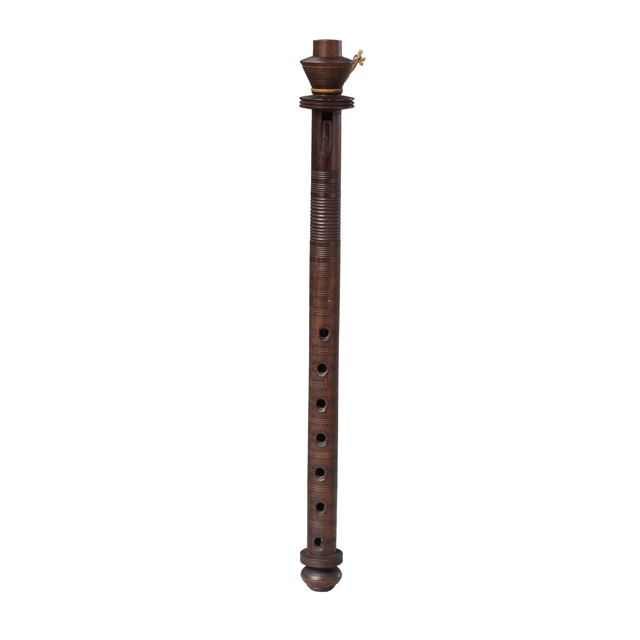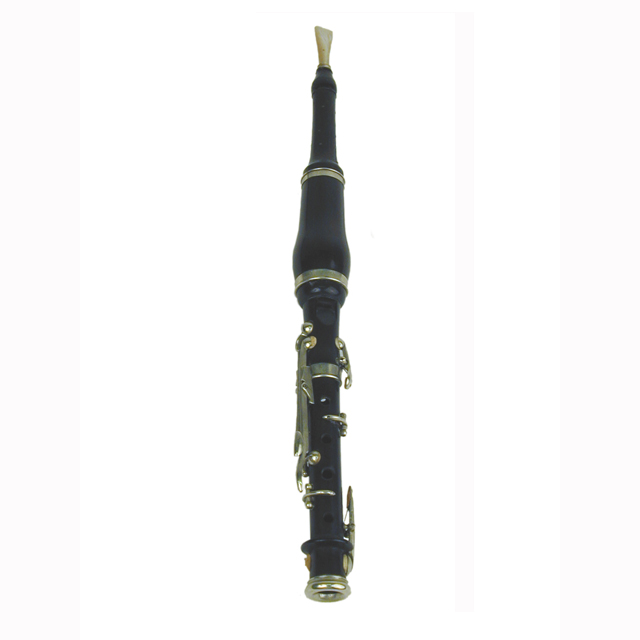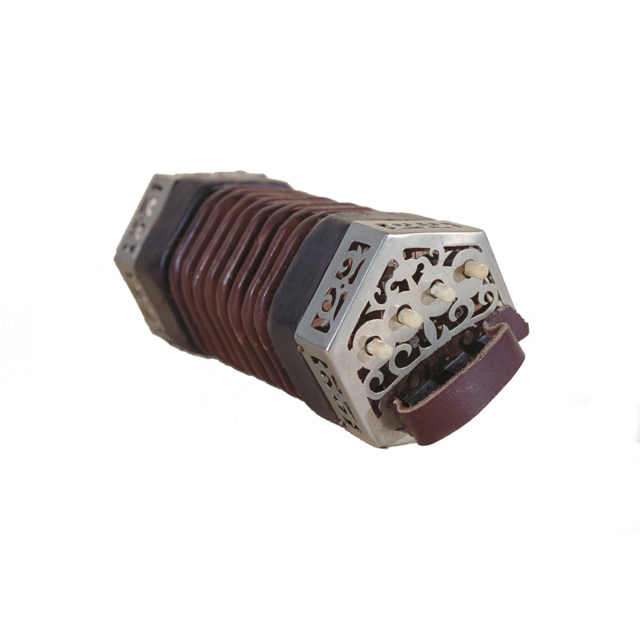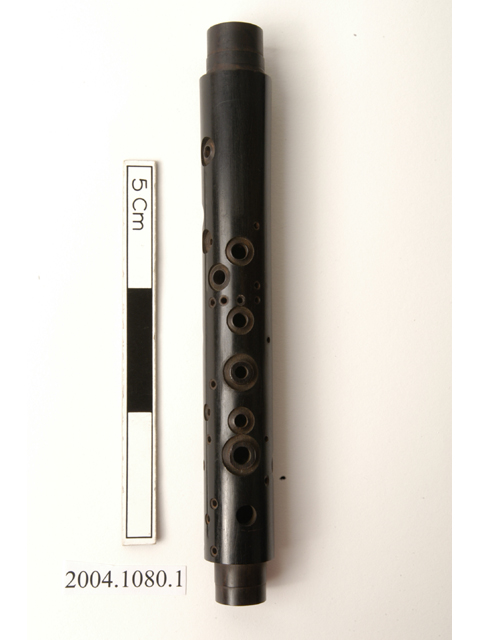
Duct flute. Local name 'chabbabeh' (Engel, 1874, p.159). Lathed decorations include bulbous ridges at the top and bottom (those at the top resembling a pirouette) and bands of grooves around the body. 7 fingerholes and 1 thumb hole just beneath the first finger hole. Holes are round but are recessed with longditudinal oval shaped indentations. Window is immediately beneath pirouette-type ridge. It is rectangular, approx 6x4 mm but has a vey shallow edge which rises to the outer surface for approx 22mm.The mouthhole is a circular section, less that a semicircle. The duct is formed by a block that runs from the mouthhole to the window approx 43mm. This is cut away in a curved shape at the top to form a beak approx 10 mm long. Bore at distal end: 8.5 mm
This instrument was purchased in the Paris Exhibition of 1867 for the South Kensington (later the Victoria and Albert) Museum. Its name, chabbabeh, is noted by Carl Engel in his 'Descriptive Catalogue of the Musical Instruments in the South Kensington Museum'. London:Eyre & Spottiswoode, 1874, p. 159


































































































































































































































































































































































































































































































































